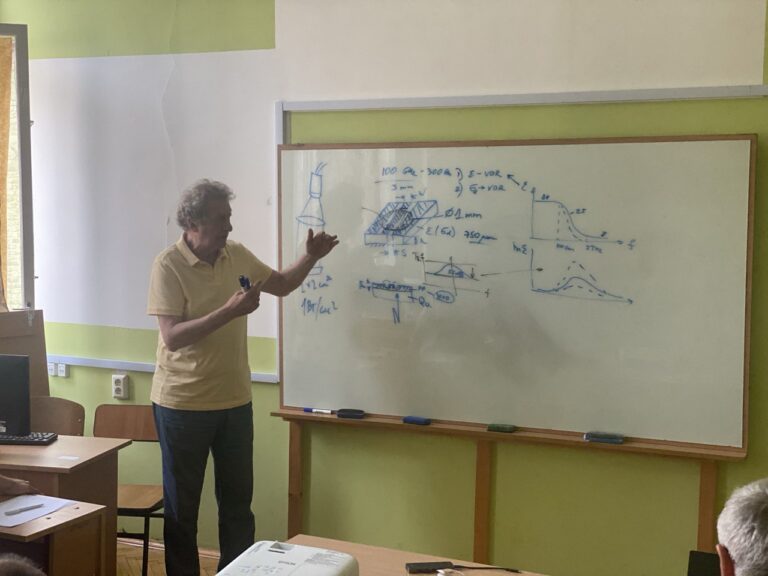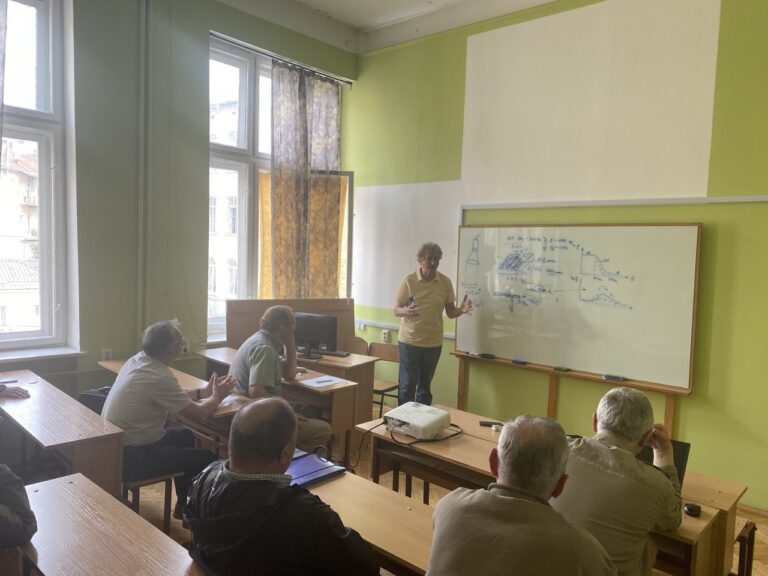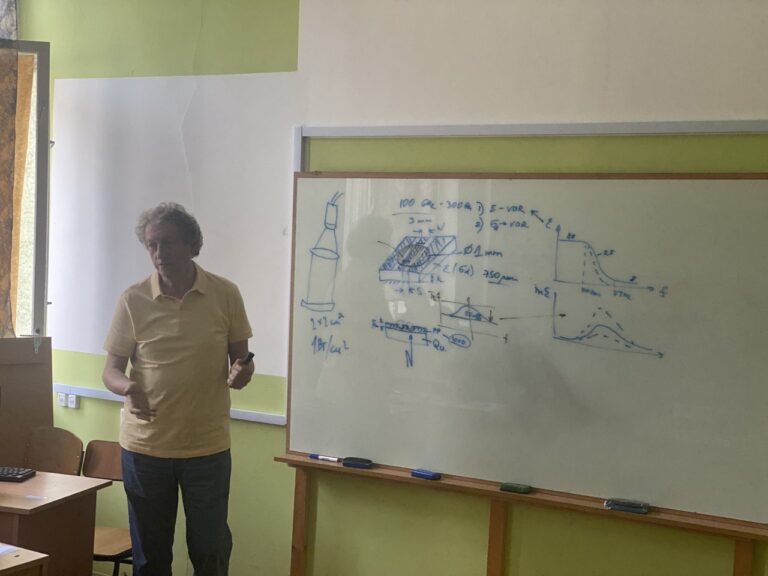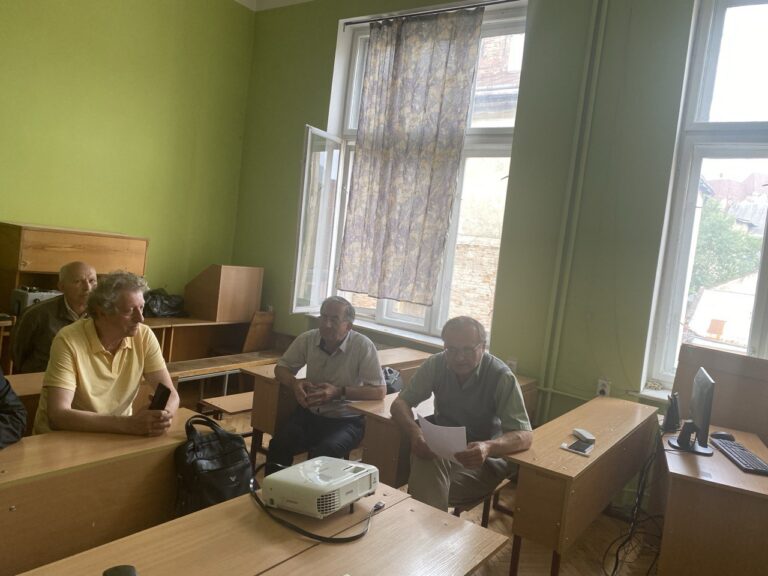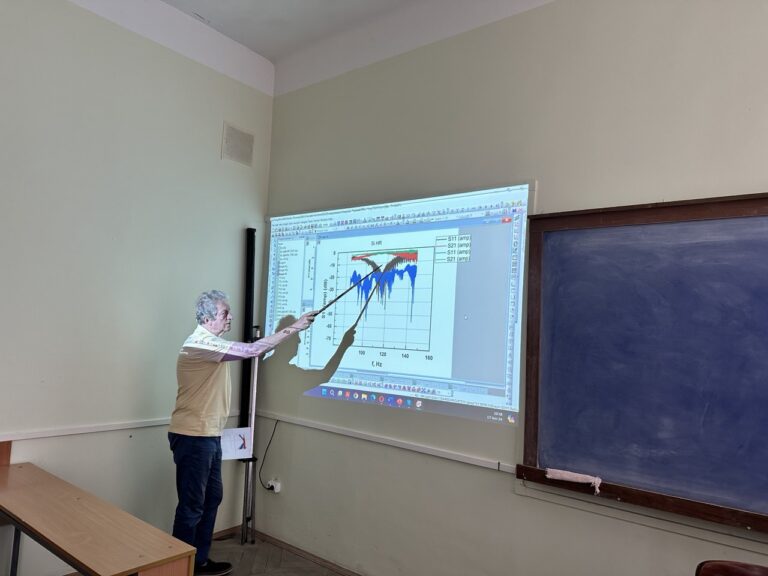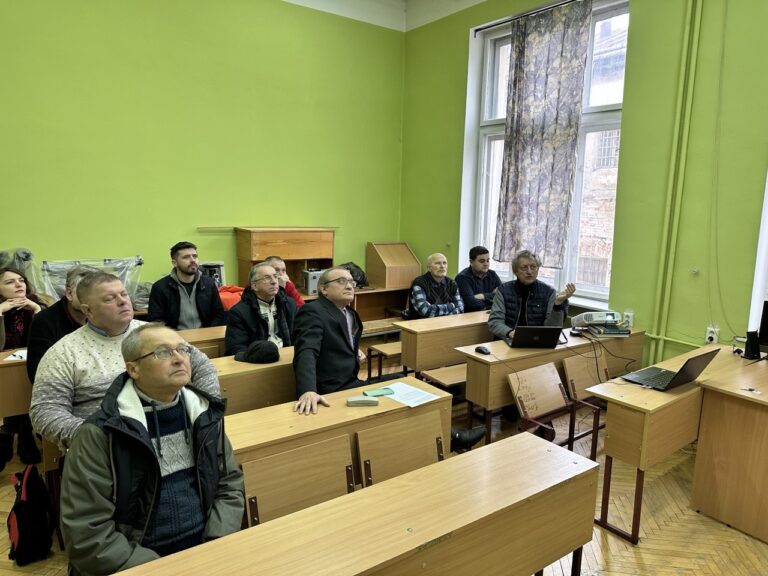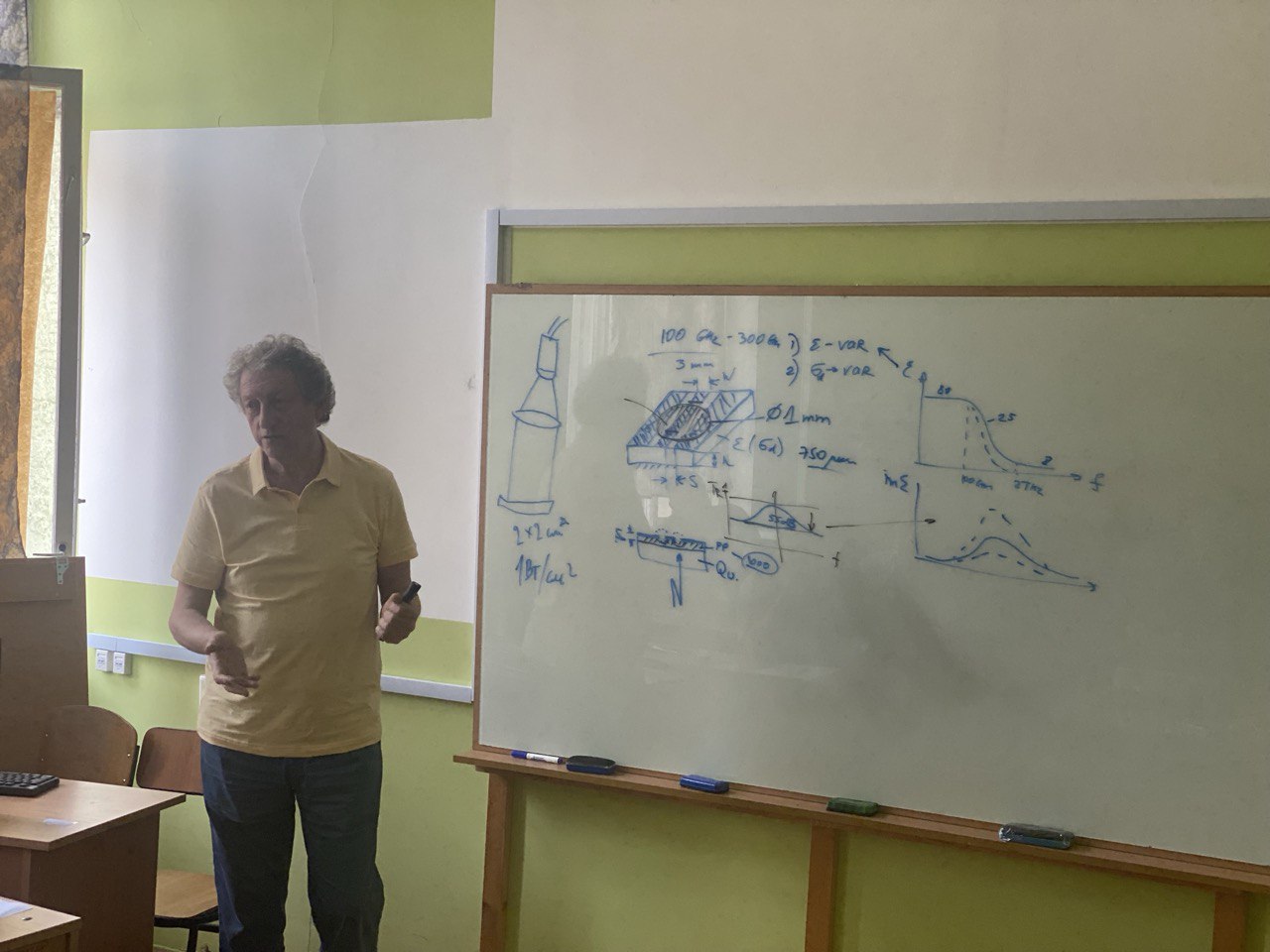Bridging Science and Innovation: Prof. Yevhen Yashchyshyn Explores the Potential of Lithium Niobate in the Terahertz Range
The TeraHertz project continues to build momentum through active collaboration and international staff exchanges. One of the most insightful recent contributions came from Prof. Yevhen Yashchyshyn, a renowned expert in electromagnetics and radiating structures from the Warsaw University of Technology (WUT). As part of the project’s secondment programme under the Marie Skłodowska-Curie Actions, Prof. Yashchyshyn spent two months at Scientific Research Company “Electron-Carat” (CARAT) in Lviv, Ukraine.
His secondment, which took place between July 20 and September 17, 2024, focused on a fascinating research direction: investigating the potential of lithium niobate (LiNbO₃) for applications in the sub-terahertz (sub-THz) frequency range – a spectral domain poised to shape the future of wireless communication, sensing, and imaging technologies.
A Material Worth Revisiting
Lithium niobate is no stranger to the world of optics. This well-characterized uniaxial crystal is widely used in photonics due to its excellent transparency, chemical stability, and nonlinear optical properties. However, while its behavior in the visible and infrared ranges is well documented, its properties in the sub-THz domain remain largely underexplored.
Prof. Yashchyshyn’s work addressed this gap by analyzing birefringence – the phenomenon where light splits into two beams when entering an anisotropic material – at very high frequencies. His findings confirmed that the birefringence of lithium niobate changes significantly depending on frequency:
In the optical range, birefringence is relatively minor (Δn* ≈ 0.4%)
In the clamped-ionic (sub-THz) range, it increases to around 30%
In the free-piezoelectric frequency range, it can reach 70%
These variations present a compelling opportunity: materials like LiNbO₃ may become key enablers of next-generation quasi-optical components capable of finely tuned THz wave manipulation.
From Theory to Feasibility
The secondment was not limited to theoretical modeling. A central goal was to evaluate how these anisotropic properties could be practically leveraged to design sub-THz beamforming devices based on lithium niobate substrates. Importantly, Prof. Yashchyshyn collaborated closely with CARAT’s material engineers to ensure that all proposed designs aligned with technological manufacturing capabilities – bridging the crucial gap between lab-based simulation and real-world application.
Strengthening Collaboration
This secondment not only yielded important scientific insights—it also reinforced the strength of cross-sector and cross-country cooperation that lies at the heart of the TeraHertz project. Prof. Yashchyshyn’s experience in electromagnetic simulation, radiating structure design, and experimental setup planning proved invaluable to the host institution. At the same time, CARAT’s practical expertise in crystal growth and fabrication opened new perspectives on what can be achieved when materials science and applied physics work hand in hand.
“The knowledge exchange on lithium niobate and its potential use in sub-THz beamforming structures has sparked new ideas and pathways for the consortium. It’s precisely this kind of collaboration that the MSCA Staff Exchange programme was designed to encourage,” said project coordinator Prof. Anatoliy Andrushchak.
Looking Forward
The work carried out during this secondment adds a significant layer to the TeraHertz project’s ambition to develop efficient, scalable, and innovative control devices for terahertz radiation. As the project progresses into further stages of material testing and device prototyping, the insights on LiNbO₃ anisotropy will play a pivotal role in optimizing device performance.
The TeraHertz project thanks Prof. Yashchyshyn for his contribution and looks forward to future collaborations between Warsaw University of Technology and SRC CARAT as we continue pushing the boundaries of terahertz science.
